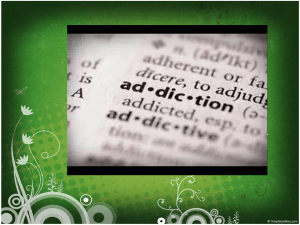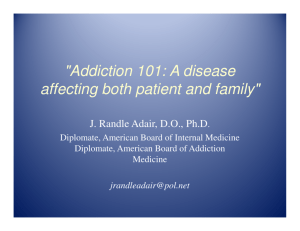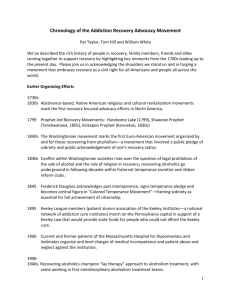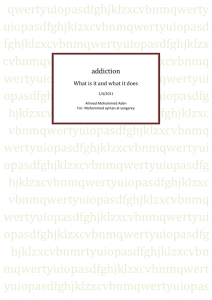Course 413 – Drugs of Abuse : Key Learning Guide
advertisement
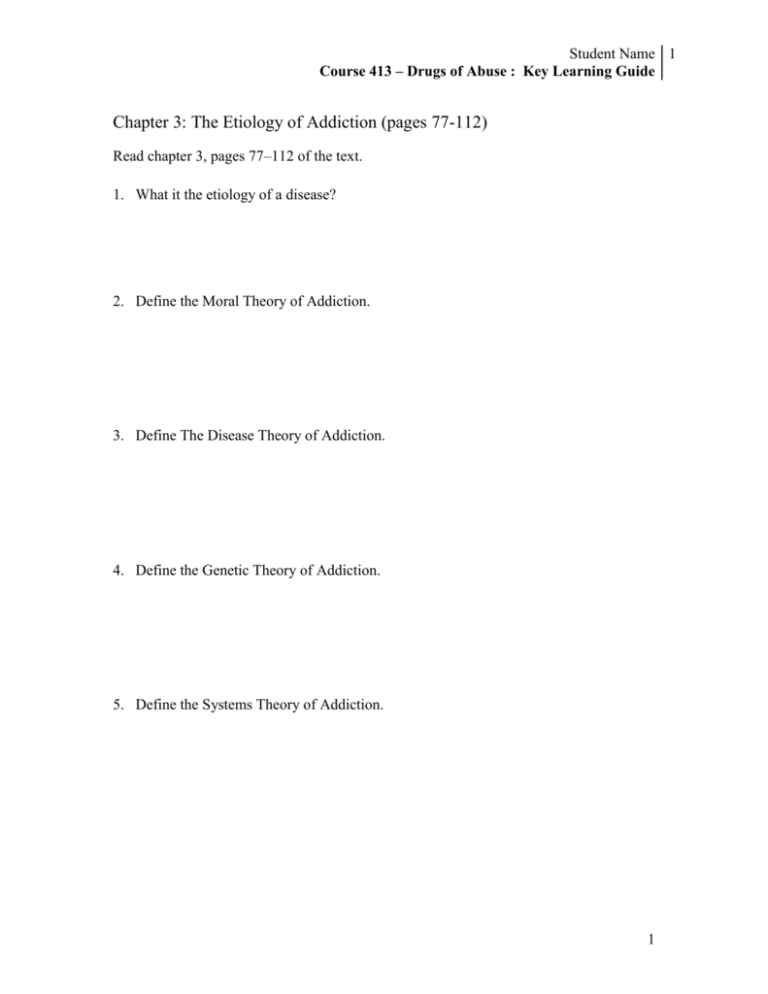
Student Name 1 Course 413 – Drugs of Abuse : Key Learning Guide Chapter 3: The Etiology of Addiction (pages 77-112) Read chapter 3, pages 77–112 of the text. 1. What it the etiology of a disease? 2. Define the Moral Theory of Addiction. 3. Define The Disease Theory of Addiction. 4. Define the Genetic Theory of Addiction. 5. Define the Systems Theory of Addiction. 1 Student Name 2 Course 413 – Drugs of Abuse : Key Learning Guide 6. Define the Behavioral Theory of Addiction. 7. Define the Sociocultural Theory of Addiction. 8. Define the Biopsychosocial Theory of Addiction. 9. Viewed from which theory is substance abuse a result of willful overindulgence? 10. Although many AA/NA groups view addiction as a disease, give three major limitations to this theory. 11. There is extensive research on alcoholism. List the possibilities as to how genetic components of alcoholism may be at work. 2 Student Name 3 Course 413 – Drugs of Abuse : Key Learning Guide 12. According to Doweiko, there are five ways that parental alcoholism impacts offspring. List them. 13. Define Boundaries, Coalitions and Roles as they relate to structural characteristics of Alcoholic Families. 14. Black identified several roles that were consistent in alcoholic/addicted families. List and define each. 15. According to the Behavioral Theory of Addictions, addictive behavior is maintained by _______________________________. 16. Which theory is the most integrated in all aspects related to addiction? 3 Student Name 4 Course 413 – Drugs of Abuse : Key Learning Guide The Compulsion Curve: A method of measure to determine the risk for use and relapse. 1. 2. 3. 4. 5. 6. Heredity Heredity + Environment Heredity + Environment + Use Heredity + Environment + long term use Heredity + Environment + addiction Detoxification and Abstinence (return to step three, once one is addicted there is no return to step one) 7. Relapse 4






